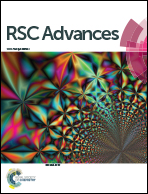Enhanced amoxicillin treatment using the electro-peroxone process: key factors and degradation mechanism
Abstract
Amoxicillin (AMO) degradation was investigated using electrolysis, ozonation, and the electro-peroxone (E-peroxone) process. The E-peroxone process was found to be the most effective for AMO degradation. 67.8% total organic carbon (TOC) mineralization was obtained after 60 min by the E-peroxone process. In comparison, only 47.3% and 3.1% TOC mineralization were obtained using individual ozonation and electrolysis processes, respectively. It was found that hydroxyl radical production and O3 utilization were both enhanced in the E-peroxone process. The effect of pH on the E-peroxone process was investigated, and the highest AMO removal rate was obtained at pH = 9, indicating pH control was crucial in the E-peroxone process. In addition, more oxidation typical intermediates were identified in the E-peroxone process than the ozonation process using UPLC-MS/MS. Different pathways of AMO degradation were proposed, involving the hydroxylation of the benzoic ring and N, the four-membered β-lactamic ring opening, the oxidation of S, and other bond cleavage reactions. All these results above indicated that the introduction of electrolysis in ozonation has enhanced AMO cleavage and hence its degradation.


 Please wait while we load your content...
Please wait while we load your content...